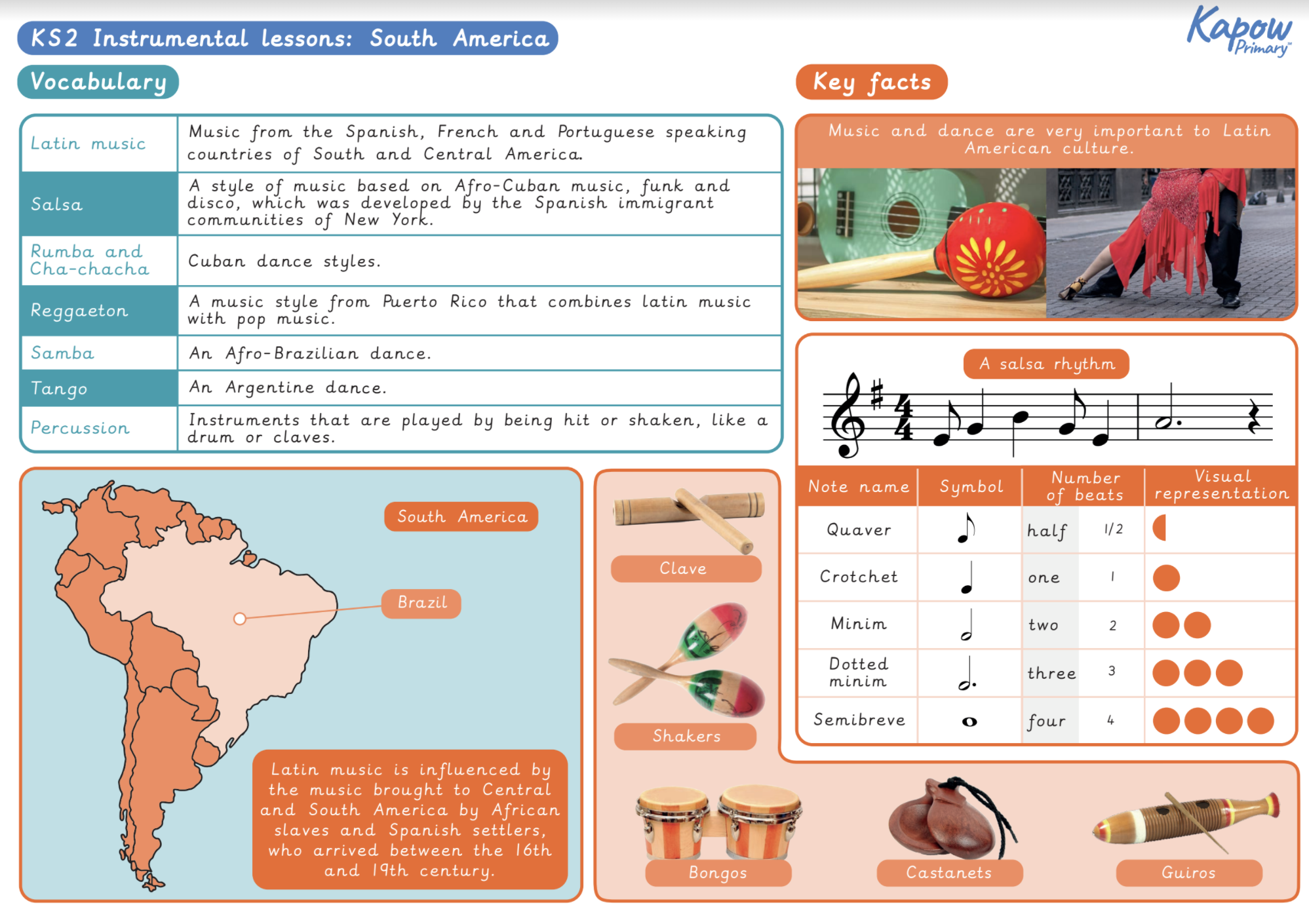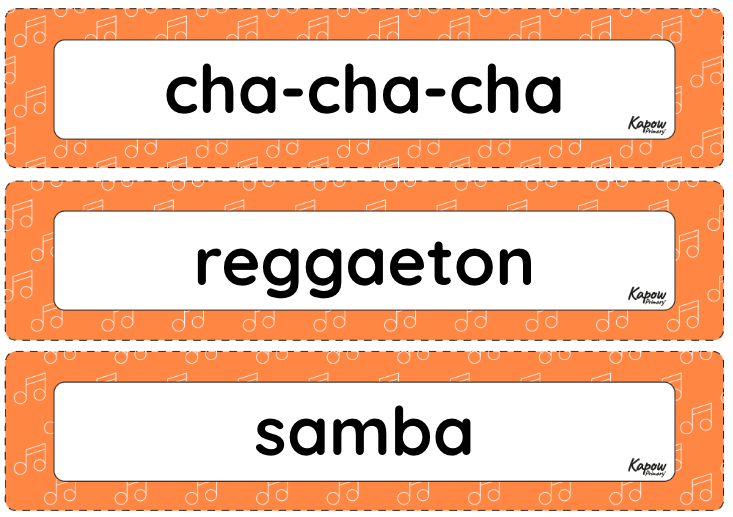Unit 3: South America (Instrumental lessons)
Learning about the history and features of Latin America music, performing a salsa style song and playing from staff notation; performing a mini carnival using a range of performance techniques including song, dance, tuned and untuned musical instruments.
- Subjects >
- Music >
- KS2 Whole-class instrumental lessons >
- Instrumental lessons >
-
Unit 3: South America (Instrumental lessons)
Unit outcomes
Pupils who are secure will be able to:
- Play the clave rhythm accurately.
- Answer the questions on the Knowledge catcher (see unit page) with appropriate support.
- Add letter names to the tuned percussion part 1 and play the part.
- Ability to add pitches to notated rhythms and perform them accurately.
- Sing and/or play the song confidently.
From June 2025, lessons within this unit will be updated to include a Recap and recall section and Kapow’s Presentation mode feature.
Suggested prior learning
Unit 2: Caribbean (Instrumental lessons)
Get startedLessons
Lesson 1: Vamos, let’s go!
- To learn, perform and combine the key rhythms used in salsa music.
Lesson 2: History of Latin music
- To understand the history and key features of Latin music.
Lesson 3: Salsa melodies
- To identify the pitch of notes from staff notation and play them accurately.
Lesson 4: Melodic composition
- To compose and notate a salsa-inspired melody.
Lesson 5: Carnival spirit
- To perform a piece of salsa music using voices, instruments and dancing.
Related content
Unit resources

Knowledge organiser: Unit 3: South America (Instrumental lessons)
Aimed at pupils, a single page which gives key facts and definitions from the unit "Unit 3: South America (Instrumental…

Vocabulary display: Instrumental lesson – South America
A display version of the key vocabulary for the 'Instrumental lesson - South America' unit.
Cross-curricular opportunities
Geography

